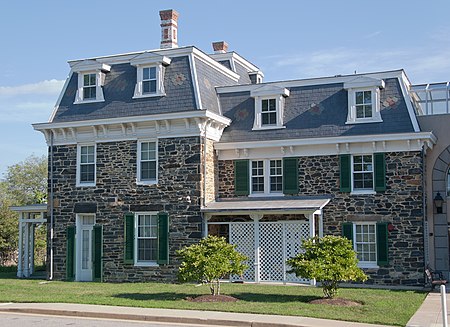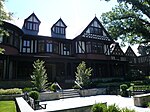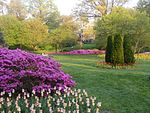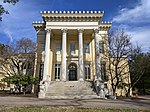Gallagher Mansion and Outbuilding
Baltimore City LandmarksBaltimore Registered Historic Place stubsHouses completed in 1854Houses in BaltimoreHouses on the National Register of Historic Places in Baltimore ... and 2 more
Italianate architecture in MarylandNorthern Baltimore

Gallagher Mansion and Outbuilding is a historic home located at Baltimore, Maryland, United States. It was originally built about 1854 as an Italianate villa, and was subsequently enlarged and embellished in the Second Empire style of the later mid century. It features walls built of local rough fieldstone and rubble and a mansard roof covered with decorative slate. The outbuilding is a two-story rectangular wood carriage house with a hip roof and cupola.Gallagher Mansion and Outbuilding was listed on the National Register of Historic Places in 1983.
Excerpt from the Wikipedia article Gallagher Mansion and Outbuilding (License: CC BY-SA 3.0, Authors, Images).Gallagher Mansion and Outbuilding
North Charles Street, Baltimore Greater Roland Park
Geographical coordinates (GPS) Address Website Nearby Places Show on map
Geographical coordinates (GPS)
| Latitude | Longitude |
|---|---|
| N 39.351388888889 ° | E -76.610833333333 ° |
Address
Loyola University Maryland
North Charles Street 4501
21210 Baltimore, Greater Roland Park
Maryland, United States
Open on Google Maps








